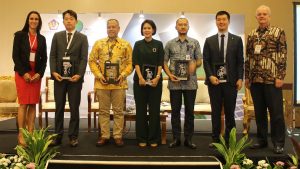Indonesia’s Textile Heritage
Indonesia’s traditional textiles are integral to its culture and heritage. They are passed down from generation to generation, often featuring intricate patterns and vibrant hues reflecting Indonesia’s rich history and diverse cultures. This article investigates their significance within Indonesia by exploring key regions, techniques, and preservation efforts to protect this irreplaceable legacy.
The Cultural Significance of Textiles
Indonesian textiles are more than mere fabrics; they serve as an avenue of cultural expression. Each region boasts its distinct style influenced by local customs, beliefs, and natural surroundings. Textiles used during ceremonial settings such as weddings or religious rituals serve as powerful markers of identity and status, serving both as tangible reminders and status symbols.
2. Key Regions and Textiles
- Batik from Java: Perhaps the most well-known Indonesian textile, Batik is a wax-resist dyeing technique that produces intricate fabric patterns using wax resist. Yogyakarta and Solo, in particular, are famous for producing Batik; each region boasts its own motifs and color schemes depicting scenes from nature, mythology, or everyday life. UNESCO has recognized batik as a Masterpiece of Oral and Intangible Heritage of Humanity.
- Nusa Tenggara Ikat: This style is created using an intricate dyeing process, where threads are colored before weaving them together into fabric. This creates unique textiles with complex, blurred patterns unique to every piece. Sumba and Flores in Nusa Tenggara, Indonesia, are well known for producing Ikat textiles, which can often symbolize wealth and social status within traditional clothing or ceremonies.
- Songket from Sumatra: Songket textiles from Sumatra, particularly Palembang, are well known for their handwoven Songket fabrics crafted of silk or cotton threads with intricate patterns woven using gold or silver threads woven through intricate weaving patterns. Songket textiles have long been worn during important ceremonies as symbols of prestige.
- Ulos from North Sumatra: Ulos textiles from the Batak people of North Sumatra are known for being hand-woven from cotton or silk and often used during ceremonies and rituals, often considered sacred gifts on special occasions such as weddings and births.
Techniques and Symbolism
These textile creation techniques often involve hours of hard labor and high skill levels. For example, Batik involves applying wax in intricate patterns on fabric before dyeing it multiple times until reaching the desired colors—finally, all traces of wax are removed to reveal a finished design.
Each textile carries significant symbolic meaning. For instance, Batik patterns, such as the Parang design, are usually reserved for royalty, while Kawung patterns symbolize wisdom and longevity. On the other hand, Ikat textiles often depict natural elements like water or mountains to represent how closely people interact with their environment.
Challenges to Conservation Planning and Preservation Planning
Preserving traditional textile techniques is vital to Indonesia’s cultural heritage, but they face several threats, such as declining numbers of skilled artisans and increased competition from mass-produced fabrics. The government and non-governmental organizations are trying to support local artisans, promote traditional textiles, and teach younger generations these skills.
Educational programs, exhibitions, and collaborations between artisans and designers to produce contemporary fashion using traditional techniques are part of these efforts. Furthermore, tourists’ enthusiasm for traditional textiles provides local communities with additional revenue streams, enabling these crafts to continue thriving.
The Future of Indonesian Traditional Textiles
Indonesia’s traditional textiles rely on continued efforts to preserve and promote them. By incorporating traditional techniques into modern fashion and encouraging sustainable practices, Indonesia can ensure its rich textile heritage remains vibrant and relevant in the 21st century.





Post Comment